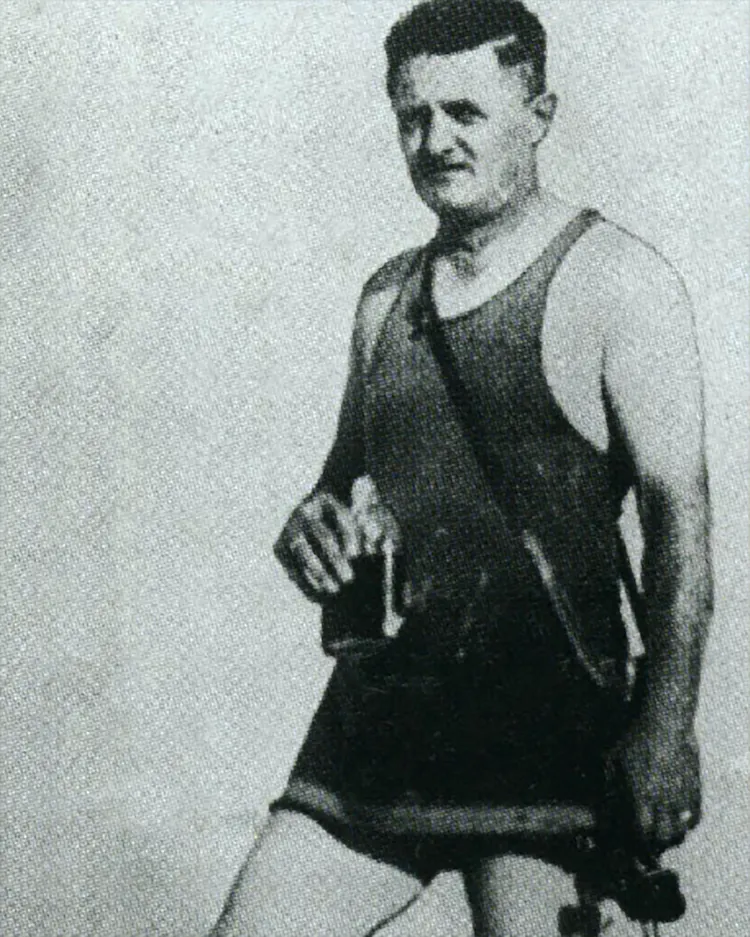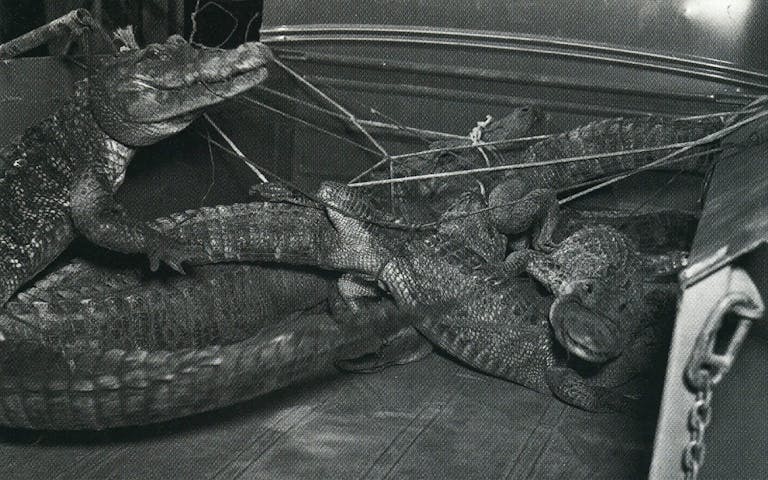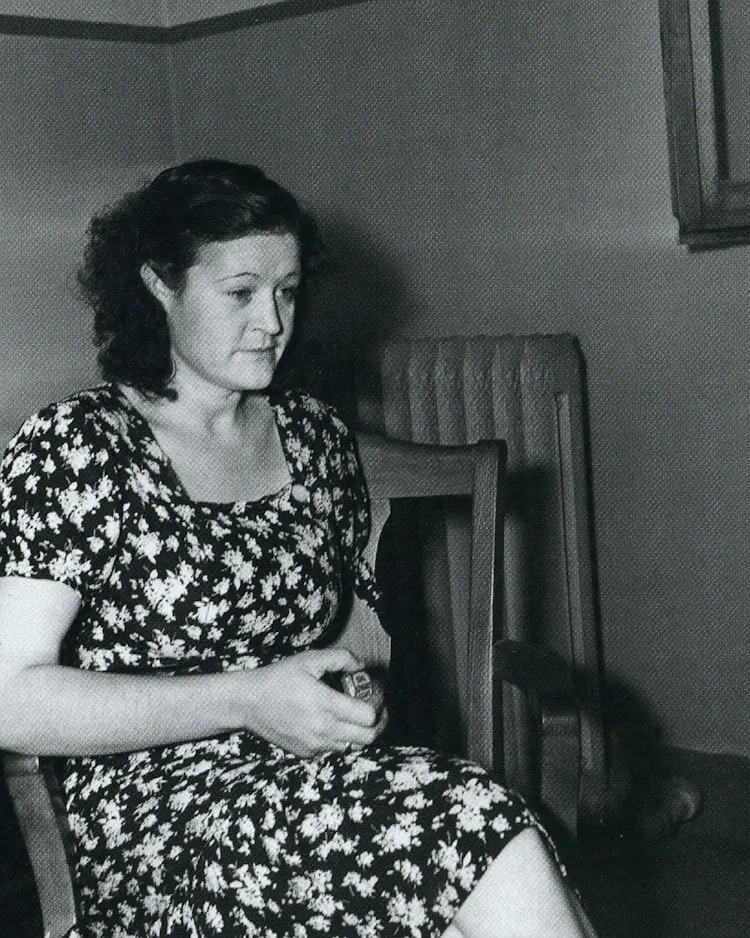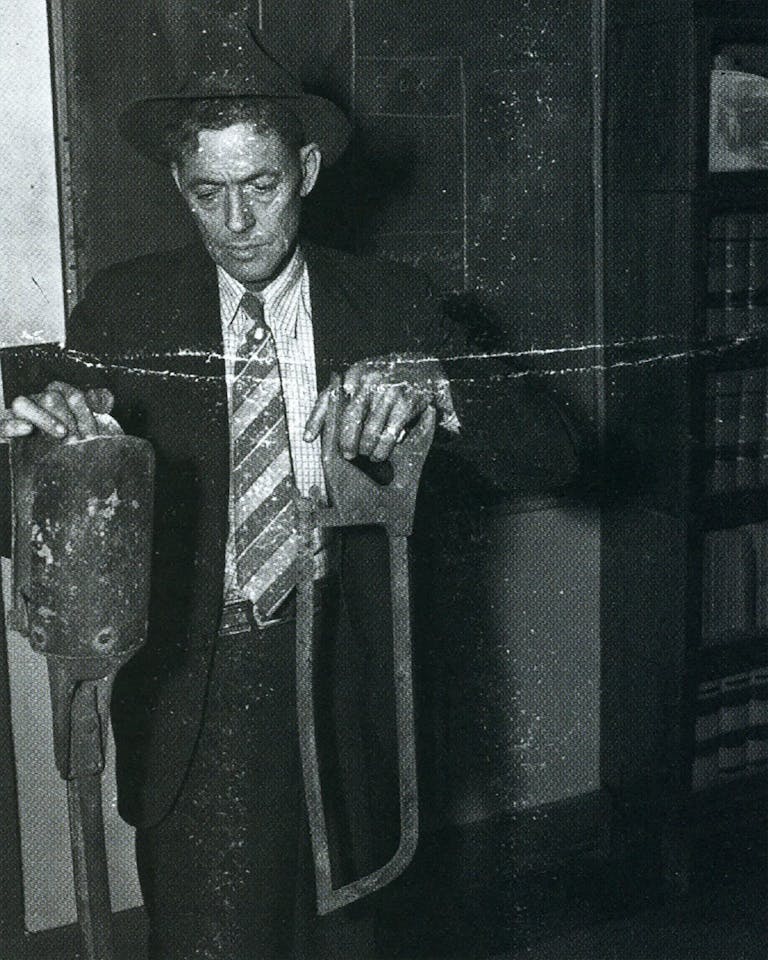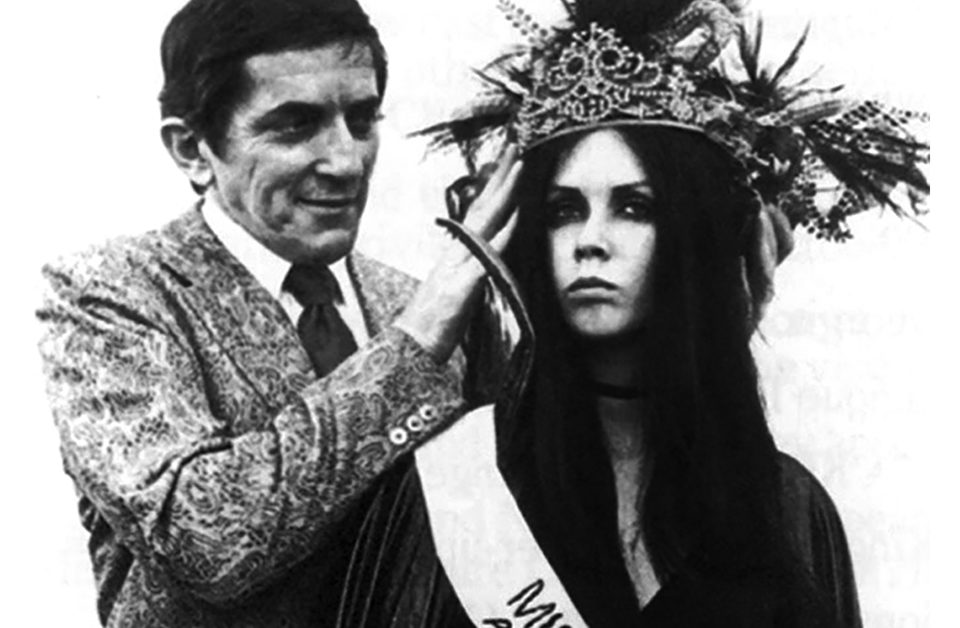
Miss American Goth Pageant
May 23, 2024In a vintage photograph, Joe Ball stands on a Texas beach, clad in an old-fashioned bathing suit. In his right hand, he holds an open whiskey bottle, while his left hand grips a pair of binoculars. He stands barefoot in the white sand beside weedy brush typical of Texas dunes. With a handsome yet roguish look, Ball gazes at the camera with a squint or a sneer. Without knowing his history, one might mistake him for a carefree partygoer, resembling a genteel William Faulkner. However, those familiar with Joe Ball’s dark past see a man capable of heinous crimes. On a day like this, he could lure his girlfriend to a secluded spot, shoot her, and bury her in the sand before returning to his bar, waitresses, and alligators. This is precisely what Joe Ball did.
Joe Ball: The Bluebeard of Texas
Joe Ball was a bootlegger, gambler, and a member of Elmendorf’s wealthiest family, located just southeast of San Antonio. Known as a ladies’ man, Ball had a reputation for eliminating his pregnant waitresses, sometimes feeding them to his alligators. In September 1938, deputy sheriffs discovered the dismembered corpse of one of his barmaids and his girlfriend’s body buried in the sand. His alligators were also removed. Ball earned the monikers “Bluebeard of Texas,” “Butcher of Elmendorf,” and “Alligator Man.” His story fascinated the public, becoming a dark legend of human depravity. Estimates of his victims range from five to twenty-five, making Joe Ball one of America’s first modern serial killers.
The Legends and Facts of Joe Ball
The details of Ball’s story vary significantly across sources, from the number of victims to witness accounts. Online, websites like “Wacky World of Murder” and “Homicidal Heroes” often depict Ball as an early rock star of serial killers, akin to Ed Gein, whose gruesome acts inspired Hitchcock’s Psycho and Hooper’s Texas Chainsaw Massacre. Ball’s tale has even inspired movies like Eaten Alive. But was Joe Ball truly a deranged killer or merely misunderstood?
Elmendorf’s Foundation: Frank X. Ball and the Birth of a Town
Frank X. Ball, Joe’s father, played a crucial role in Elmendorf’s development. Established in 1885 by Henry Elmendorf, who later became San Antonio’s mayor, the town was initially a hub for cotton production. Frank Ball borrowed money to build a gin, processing cotton that the railroad would transport worldwide. Elmendorf thrived by the late 1920s, with general stores, a hotel, a doctor’s office, meat markets, and a confectionery. “My daddy said there’d be cotton wagons two miles up the old highway,” remembered Bucky, Joe’s nephew. Elmendorf was a bustling town back then.
Frank Ball amassed wealth, buying and selling farms, opening a general store, and building the first stone home in the area. His children, including Joe, grew up in a prosperous environment. Joe, however, did not follow in his father’s footsteps. Instead, he found his calling in the illicit trade of bootlegging during Prohibition, selling whiskey from a fifty-gallon barrel.
Joe Ball’s Descent into Infamy
Joe Ball’s criminal activities escalated when he opened a tavern after Prohibition. The tavern featured a bar, a player piano, and a room for card games. Behind the tavern, Ball kept alligators in a concrete pool, attracting customers with drunken spectacles involving live animals. Ball employed dance-hall girls as waitresses, many of whom disappeared under mysterious circumstances.
The Murders and the Investigation
Joe Ball’s romantic entanglements often ended tragically. In 1934, Ball met Minnie Gotthardt, known as Big Minnie, who helped run the bar. However, Ball’s violent tendencies surfaced when he began seeing Dolores “Buddy” Goodwin. Despite their relationship, Ball abused Buddy, throwing a bottle that scarred her face. When Big Minnie disappeared, Ball told conflicting stories about her whereabouts. After marrying Buddy, Ball confessed to her that he had killed Minnie.
In September 1938, deputy sheriffs John Gray and John Klevenhagen investigated Ball following reports of a foul-smelling barrel behind his sister’s barn. Confronted with the evidence, Ball shot himself in his tavern. The subsequent investigation uncovered more bodies, including that of Hazel Brown, whom Ball had murdered and dismembered.
The Aftermath and Legacy
Joe Ball’s gruesome acts left a lasting impact on Elmendorf. His alligators were sent to the San Antonio Zoo, and his handyman, Clifton Wheeler, was jailed as an accessory. Over time, Ball’s story became sensationalized in pulp magazines and true-crime books, cementing his status as a legendary figure in American crime history.
Conclusion
The legend of Joe Ball, with his gruesome acts and alligator-filled tales, continues to captivate those intrigued by the depths of human infamy. As one of America’s early serial killers, his story is a chilling reminder of the darkness that can lurk behind a seemingly charming facade. The tale of Joe Ball serves as a stark example of how legends can grow, blending fact with fiction, and becoming a permanent part of local lore.

